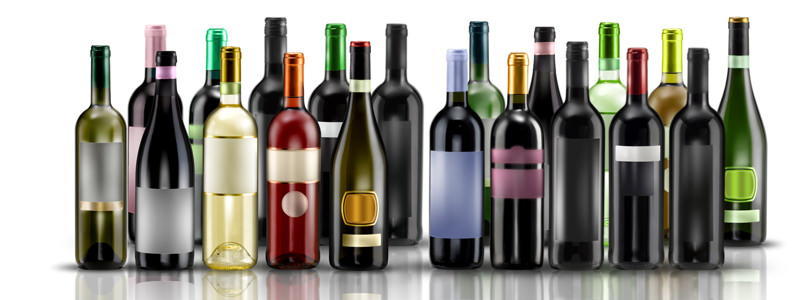Those who love wine tend to romanticize wine cellars and collections, so it’s not surprising that most of us think that all wine will improve with age, but this just isn’t the case. While we may spend time drooling over larger cellars and thinking about how amazing it would be to drink wine that is ten, twenty and even thirty years old, almost 98% of all wine out there is not meant to last this long. In fact, most of the wine we buy in the store is meant to be drunk immediately, with a shelf live of only about 3-5 years. You can consider the vintage year on these bottles similar to the Budweiser “born on” date; a few years away from this vintage, and the wine may start to “die” and not taste all that fantastic. So how do you know if a wine you own should be kept away in a cool place on its side, or popped immediately? Here are a few rules to follow.
The first rule is to look at the price. While there are some outliers to this guideline, it’s a pretty safe bet that if the wine you purchased was under $30, you’ve got a bottle the winemaker intended to be popped soon after you purchased it. This doesn’t mean wines under $30 are bad, it just means they taste their best young.
It’s important to remember that even before the bottle reached you, it may have sat in a winery’s cellar for a year or two, then made the journey to your city and finally to the shelf at your store, so it’s not like the winemaker didn’t think the bottle you’re popping couldn’t use a bit of aging to really develop the wines flavors – unless you’re drinking Beaujolais Nouveau – but it means that after the bottle makes it to you, it’s ideal if you pop it and enjoy it within 3-5 years. Almost all wines, however, are enjoyed within 24 hours of purchasing them, especially if they’re under $30, and since winemakers know this, they make wines that taste their best in their youth.
The second rule of thumb in determining whether a wine might get better with age is to look at the color. For the most part, if you’re drinking a white or a rosé, these wines should be popped in the season in which they’re bought. If you love Sauvignon Blanc or Provence rosé in the summer and that’s when you bought them, then don’t leave them sitting around until the next summer — drink them now!
There are a few whites that do age incredibly well — including Chardonnay from Burgundy, German Riesling, Austrian Gruner Veltliner, white dessert wine like Sauternes and high-end vintage Champagne — but they are in the minority, and again here your best indication as to whether or not you have one of these ageable bottles will be price.
If you have a red wine on your hands, the third rule of thumb is to determine the grape from which it was made. Again, this is a generalization for simplicity’s sake, but for the most part, red wines that are made from grapes high in tannins, acidity or both, such as Cabernet, Merlot, Syrah, Nebbiolo and even Pinot Noir, tend to not only age the best, but need a bit of aging in order to fully develop their flavors. This is because over time the acidity in all wine decreases, and so when you have a wine that isn’t high in acidity from the beginning, popping a bottle down the road would result in a wine that you think tastes flat and dull; a highly acidic wine ensures that the wine will have what is called a longer runway, because even down the road there will be acidity left to give it pep. The high tannins do their part as well, protecting the wine with their antioxidants and smoothing and rounding out the wine over time. However, it’s important to remember that just because a wine is made from these grapes doesn’t mean it needs to be aged, as winemakers can often create great wines for drinking in the short-term with the same ingredients. If you’re unsure, just refer to rule number one: price.
Finally, the last rule of thumb when determining whether or not you need to drink the bottle soon or hold on to it is trusting your own tastes. If you buy a few bottles of the same wine, say at the under $30 price — remember we said there can be outliers to this rule — and after popping one of the bottles, you think it might get better with a little time — maybe because it is highly tannic or really acidic – go ahead and let the rest sit for a bit to see what happens. Only you can ultimately be the judge of whether or not you like a wine at a certain time, so trust yourself.
If all else fails, remember every wine, even age-worthy stuff, is better enjoyed now with friends, than later alone. A collection isn’t good to anyone if you deny yourself the chance to drink the wine.
Header Image via Shutterstock.com

